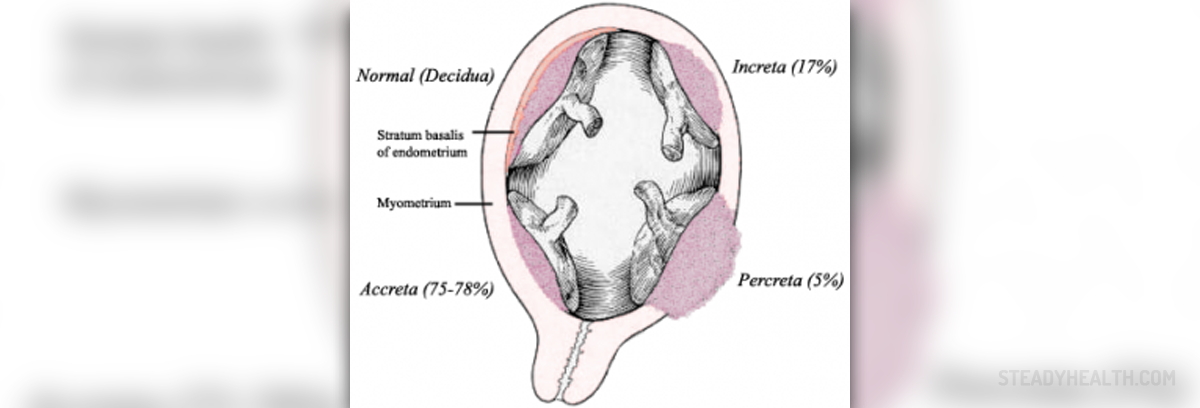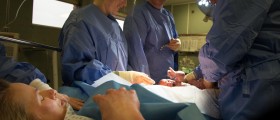
If you ask a doctor, they will probably tell you that placenta accreta is difficult to diagnose through ultrasound, and that an MRI scan is the only true way of determining how serious a placenta accreta is. Vaginal bleeding, especially in the third trimester of pregnancy, is the main indication of a placenta accreta. Although placenta accreta is normally looked for during an ultrasound, it can be detected by a Doppler as well in some cases, many instances of this serious placental condition are not diagnosed before birth. When placenta accreta is diagnosed, a c-section is recommended, or additional intervention after the birth. When a placenta is not born within a certain time after the baby (usually half an hour), a placenta accreta is also suspected by attending OBs and steps undertaken to treat the mother.
When the placenta is buried deep enough into a uterus, it can be a cause for hysterectomy. Sometimes this is done preventively after a c-section, but when the placenta accreta was not diagnosed prior to birth, it can be an emergency situation. The good news is that placenta accreta is rare. Women who have already been diagnosed with placenta previa (placenta covering the cervix) are at a higher risk, as are women who have had previous cesarean sections.
- www.nhs.uk/chq/Documents/2015%20uploads/RCOG%20-%20low-lying-placenta-after-20-weeks.pdf
- medlineplus.gov/ency/article/000900.htm
- Photo courtesy of TheNewMessiah by Wikimedia Commons: en.wikipedia.org/wiki/Placenta_accreta#/media/File:Placenta_accreta.png













Your thoughts on this
Loading...